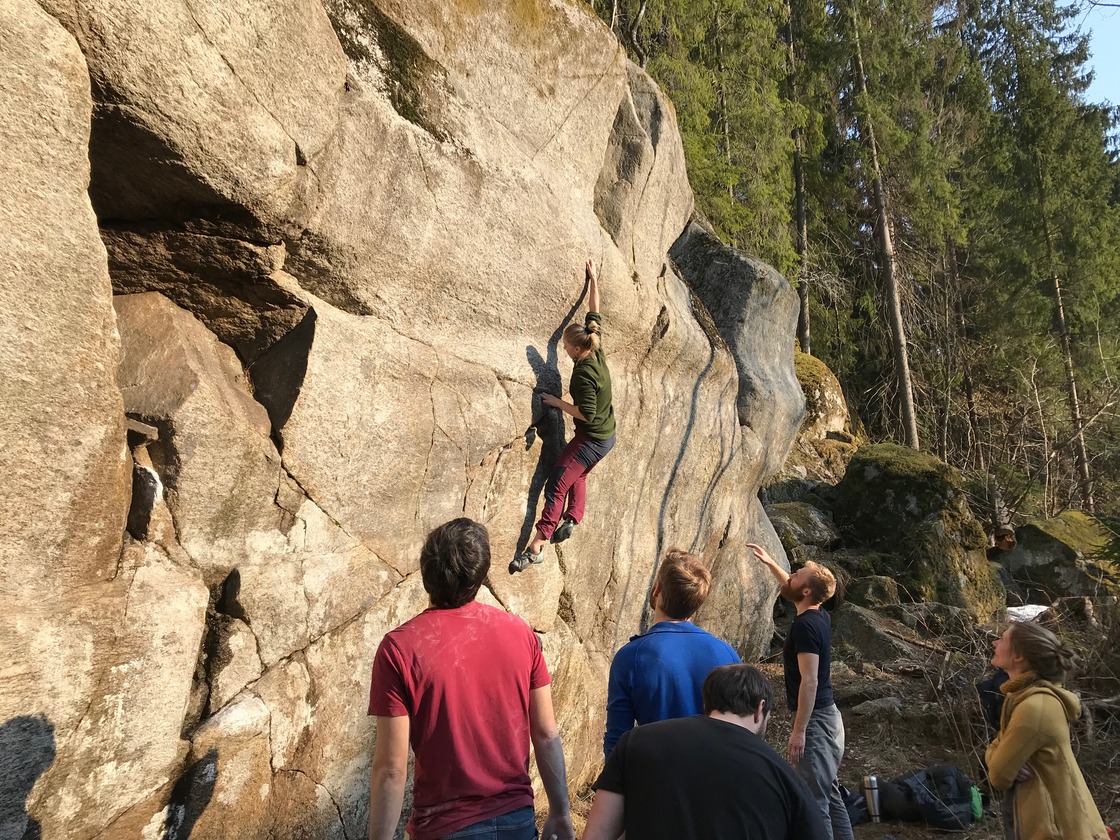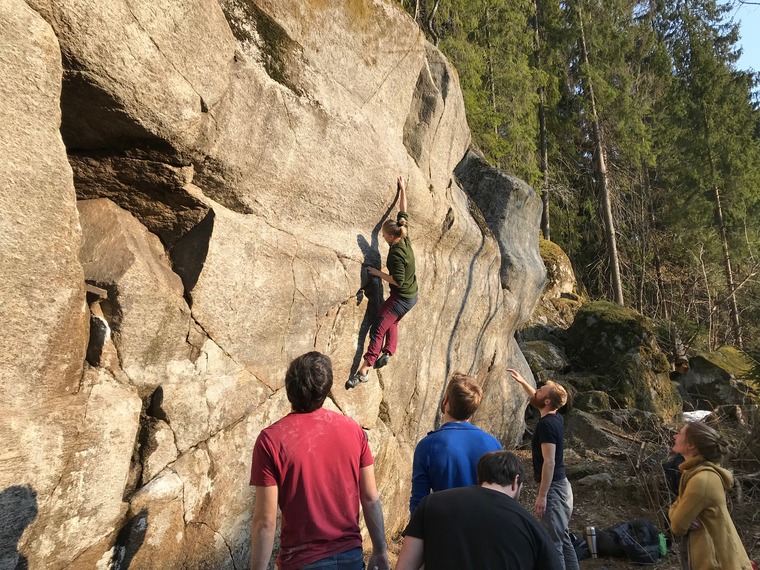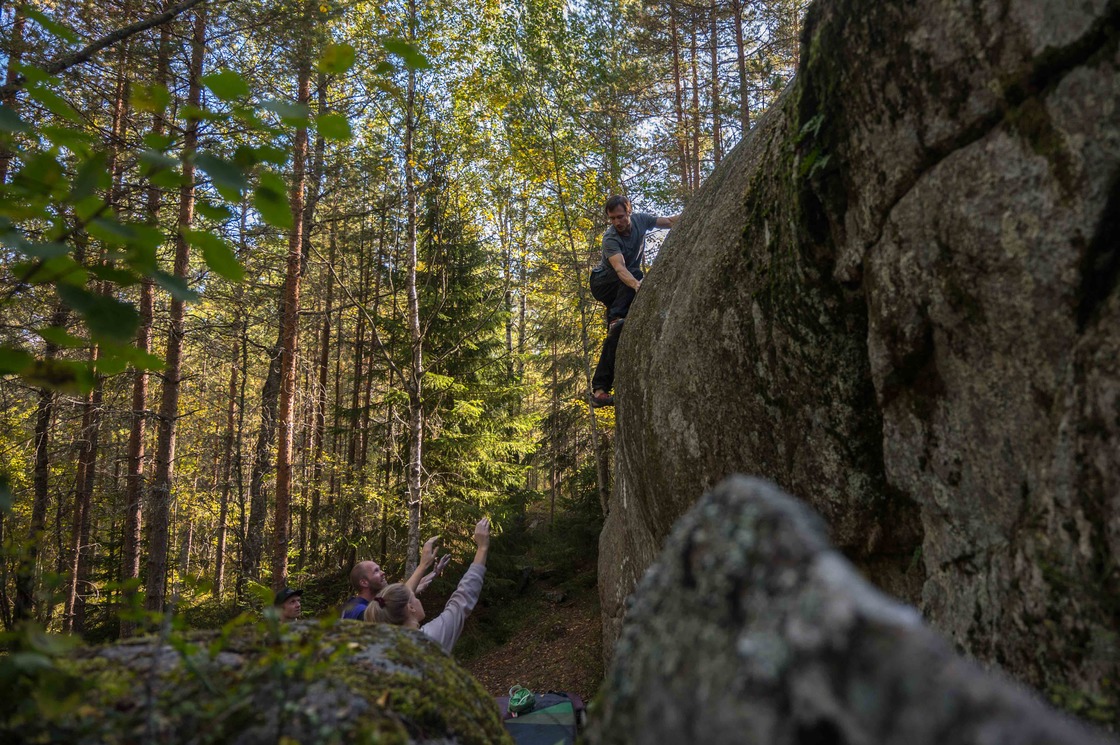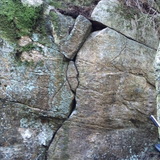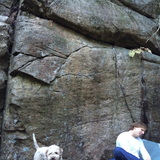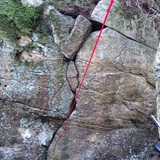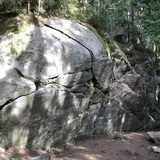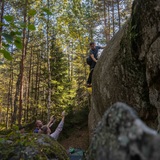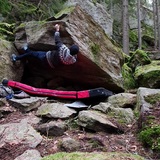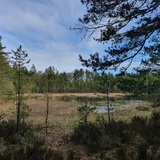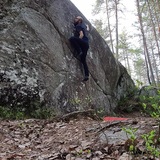Developed from the late 2000's to mid 2010's, mainly by Truls M. Larsen and Thoralf Bergersen, Katteputten crag offers a variation of boulders on walls and small, free standing boulders. The sectors are easily accessible by nice forest tracks, and the further in you get the more you feel like you've got the entire forest to yourself. Katteputten is south of the Filmplaneten crag, but also borders directly to Delux in the northeast, and Kroketrekkeren to the southeast. About 10 minutes walk south from the southern part of the area, you can get to Haraløkka and Bukkeberget.
Although the sectors are a bit more spread out here, mainly spread along north-south tracks through the woods, there are a couple of higher density clusters, like Katteparken and Skøyenhylla, as well as the area around Speidersteinen and Kontorveggen.
⭐ Speidersteinen is probably the most known "beginner boulder" in Østmarka, and is a free-standing rock with routes all around it. The boulders is surrounded with other walls as well, and can offer some tall slabs and even highballs. Katteparken is a collection of free standing rocks with lines on the low to medium grades, mostly. The nearby Skøyenhylla offers some taller boulders, and a few higher grade routes as well. Kontor- and Hjemmekontorveggen offers some good wall problems as well, from easy grades up to 7c. If you like slab climbing, why not try out sectors Rakettveggen and Ubåtveggen, which offers beautiful slab problems on a wide range of grades.
⭐⭐ If you visit during May you should consider joing the annual "Østmarka Buldremaraton"; an informal bouldering competition organised by the local climbing community (Google Østmarka buldremaraton) and a good way to get to meet some local climbers. The competition starts from the parking at "Pumpehuset" (see the access information).
🌧️ After rainy weather, try areas with free standing rocks first, like at Speidersteinen and Katteparken. Areas that consist of walls often get seepage after wet weather, and can take days or weeks to dry out properly.
Østmarka is a nice destination all spring, summer, and autumn. If a lot of snow fell during the winter, it can take a while for the snow and ice to melt out, particularly in shaded areas, and can resulting in seepage for a long time through spring. It's also possible to climb during winter if you don't mind sub-zero temperatures, but wet snow/ice can make it impossible to clean the rocks (especially the top outs).
⛰️ Like the rest of Østmarka, Katteputten also consists of ancient bedrock, mostly gneiss, a metamorphic type of rock. You can encounter many types of textures and patterns in the area.
Some of the less popular boulders have not been maintained in the last few years, and may be overgrown. The topo images are from 2020, so keep that in mind and bring a steel brush if it looks like it needs some maintenance.
